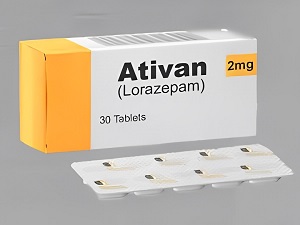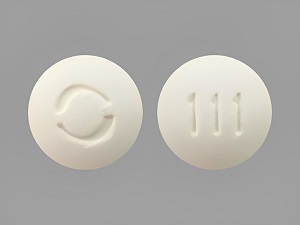In the realm of pain management, where every moment of relief is a gift, tramadol emerges as a beacon of hope for millions suffering from acute and chronic pain. This enlightening journey delves into the mechanisms, benefits, considerations, and efficacy of tramadol in pain relief treatment, illuminating its pivotal role in alleviating discomfort, restoring function, and improving quality of life.
Understanding Pain
Pain is a complex and multifaceted experience, ranging from acute sensations triggered by injury or illness to chronic conditions that persist long-term. Whether it’s post-operative pain, musculoskeletal disorders, neuropathic pain, or cancer-related pain, effective pain management is essential for patients to regain comfort and resume daily activities.
The Power of Tramadol
Tramadol, a centrally acting opioid analgesic, possesses unique properties that make it beneficial for various types of pain. Unlike traditional opioids, buy tramadol online that combines opioid and non-opioid mechanisms, offering a balanced approach to pain relief with reduced risk of respiratory depression and dependence.
Mechanism of Action
Efficacy in Pain Relief Treatment
- Acute Pain Management: Tramadol is effective in managing acute pain following surgeries, injuries, or medical procedures, providing rapid relief and improving recovery outcomes.
- Chronic Pain Conditions: Tramadol is beneficial for chronic pain conditions such as osteoarthritis, fibromyalgia, neuropathic pain, and cancer-related pain, offering sustained pain relief and improving quality of life.
- Versatility: Tramadol’s versatility allows it to be used in various pain scenarios, ranging from mild to moderate or severe pain, making it a valuable option across different patient populations.
- Functional Improvement: By reducing pain intensity and improving pain tolerance, tramadol enables patients to regain functionality, participate in daily activities, and enhance overall well-being.
Strength of tramadol tablet
- Tramadol IR (Immediate-Release) Strengths:
- 50mg: Typically prescribed for mild to moderate pain relief, suitable for initial treatment in patients with lower pain intensity.
- 100mg: A moderate strength tablet often used for moderate pain management, providing extended relief and higher dosage flexibility.
- 150mg: A higher strength option for individuals with severe pain requiring stronger analgesic effects and sustained pain relief.
- Tramadol ER (Extended-Release) Strengths:
- 100mg: Initial ER dose for mild to moderate chronic pain, offering around-the-clock relief with reduced frequency of dosing.
- 200mg: A higher ER strength for moderate to severe pain management, providing prolonged analgesia and improved pain control.
- 300mg: Maximum ER strength for severe chronic pain conditions necessitating sustained and consistent pain relief throughout the day.
These tramadol strengths cater to diverse pain intensities and chronicity, allowing healthcare providers to customize treatment regimens based on individual pain profiles and treatment goals.
Comparative Analysis
- Opioid Analgesics vs. Non-Opioid Analgesics: Tramadol bridges the gap between traditional opioid analgesics and non-opioid alternatives. It provides potent pain relief comparable to opioids while offering a lower risk of respiratory depression, tolerance, and dependence, making it a preferred choice in certain patient populations.
- Individualized Treatment: The choice between tramadol and other pain medications depends on factors such as pain severity, type of pain, patient response, coexisting conditions, potential side effects, and treatment goals.
Safety Consideration
After comparative analysis we will see the safety consideration is good for tramadol therapy in the following ways:-
- Healthcare Provider Oversight: Initiate tramadol therapy under the guidance of a healthcare provider specializing in pain management. Discuss pain symptoms, medical history, medication allergies, concurrent medications, and treatment expectations.
- Dosage Optimization: Start with the lowest effective dose of tramadol to achieve pain relief while minimizing side effects and risks. Titrate cautiously based on individual response and tolerability.
- Risk of Adverse Effects: Common side effects of tramadol may include nausea, dizziness, constipation, headache, and drowsiness. Monitor for adverse reactions and report them to a healthcare provider promptly.
- Risk of Dependency: Tramadol carries a risk of physical and psychological dependence, especially with long-term or high-dose use. Use tramadol cautiously, follow prescribed dosages, and avoid abrupt discontinuation.
Navigating Treatment with Tramadol
- Comprehensive Evaluation: Conduct a thorough pain assessment, including pain intensity, duration, location, exacerbating factors, functional impact, and previous treatment responses, to guide tramadol therapy.
- Individualized Treatment Plan: Tailor tramadol therapy to each patient’s unique pain profile, considering factors such as pain type, severity, duration, treatment goals, coexisting conditions, and medication preferences.
- Multimodal Approach: Combine tramadol therapy with non-pharmacological interventions, such as physical therapy, occupational therapy, cognitive-behavioral therapy (CBT), relaxation techniques, and lifestyle modifications, for comprehensive pain management.
- Regular Monitoring: Monitor pain levels, medication effects, side effects, functional improvement, and overall well-being during tramadol treatment. Schedule regular follow-up appointments with a doctor to assess treatment response, adjust dosages if needed, and address any concerns or challenges.
Preacutions & Warning
Precautions and warnings associated with tramadol tablet use are crucial for safe and effective pain management:
- Dependency Risk: Tramadol carries a risk of physical and psychological dependency, especially with prolonged or high-dose use. Use it as directed by a healthcare provider and avoid abrupt discontinuation.
- Respiratory Depression: Tramadol, like other opioids, can cause respiratory depression, especially in high doses or when combined with other central nervous system depressants. Use with caution in patients with respiratory conditions.
- CNS Effects: Tramadol may cause dizziness, drowsiness, and impaired cognitive function. Avoid activities requiring mental alertness until you know how tramadol affects you.
- Serotonin Syndrome: Concurrent use of tramadol with serotonergic medications can lead to serotonin syndrome. Monitor for symptoms like agitation, confusion, rapid heart rate, and high body temperature.
- Seizure Risk: Tramadol can lower seizure threshold, especially in individuals with a history of seizures or epilepsy. Use cautiously and monitor for seizure activity.
- Pregnancy and Lactation: Tramadol use during pregnancy or lactation should be discussed with a healthcare provider, weighing potential benefits against risks to the fetus or infant.
- Drug Interactions: Tramadol can interact with other medications, including antidepressants, MAOIs, CNS depressants, and serotonergic drugs. Consult a healthcare provider before starting or stopping any medications.
- Liver and Kidney Impairment: Tramadol metabolism occurs mainly in the liver, and renal excretion of metabolites can be affected in kidney impairment. Adjust tramadol dosage in patients with hepatic or renal impairment.
- Avoid Alcohol: Combining tramadol with alcohol can increase CNS depression and respiratory depression risks. Avoid alcohol while taking tramadol.
- Elderly Patients: Elderly patients may be more sensitive to tramadol’s effects, including CNS depression and respiratory depression. Use lower doses and monitor for adverse effects in this population.
Always follow prescribed tramadol dosages, inform healthcare providers of all medications you’re taking, and report any concerning symptoms promptly for optimal safety and effectiveness.
Conclusion
Buy Tramadol online with its unique opioid and non-opioid mechanisms, stands as a powerful and versatile medication in pain management. By understanding tramadol’s mechanisms, benefits, safety considerations, and integrating it into a comprehensive pain management plan encompassing individualized treatment, non-pharmacological interventions, and regular monitoring, patients can experience effective pain relief, improved functionality, and enhanced quality of life.











Leave a comment